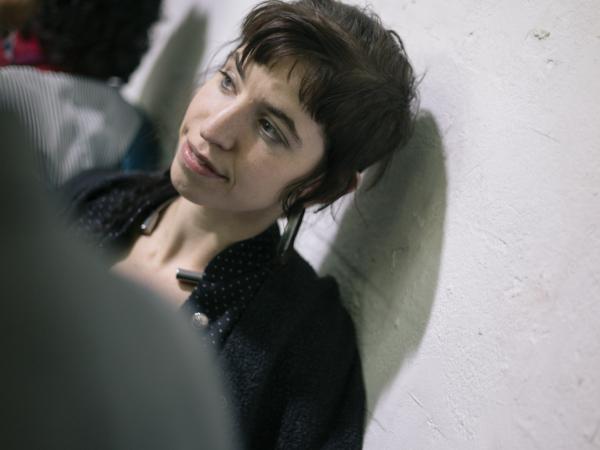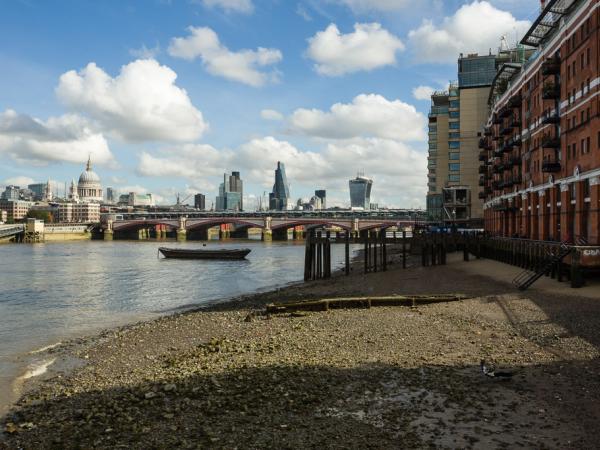Are present at this important international exhibition further 95 works made specifically by Marcello Diotallevi, Shozo Shimamoto, Ben Vautier, Walter Valentini, P. Scirpa, Lamberto Pignotti, G. A. Cavellini, Tomaso Binga, Mirella Bentivoglio, Ingrid Behm, Mauro Molinari, Henning Mittendorf, John Bonanno, Hans Braumüller, Renata and John Road, Anna Banana, Claudio Romeo, Fulgor C. Silvi, Silvana Alliri, Osvaldo Cibils, Lorenzo Di Cecco, Oronzo Liuzzi, Antonio De Marchi Gherini, Fausto Paci, Luc Fierens, C. Mehrl Bennett, Antonio Sassu, Mauro Manzoni Hall, Mirta Caccaro, Darlene Altschul, Bruno Maisons, Domenico Ferrara, Franco Flaccavento, Daniel Daligand, Clara Paci, J. A. Everaers (Ever Arts), Antonio Delle Rose, Glaucus, Lendaro, Camiless, and Donatella Stamer, Diane Bertrand, Carol Stetser, Buz Blurr, Ko De Jonge, Bobo Benches, Edwin Warney, Ptrzia Tictac, Pascal Lenoir, Andrea Bonanno, Alfonso Caccavale , Gyorgy Galantai, Alfio Fiorentino, Skotoor Neal Taylor, Franco Zingaretti, DR Phil Klaus Groh, Katerina Nikoltsou, Marina Salmaso, Otto D Sherman, Joseph Riccetti, Birger Jesch, Fernando Aguiar, William Clare Diamantini, Marco Vincenzi, Luisa Bergamini, David Gil Fernanda Fedi, Gino Gini, Marinella Giandelli, Maurizio Follin and Gabriella Gallo, Patrick Scarabottolo, Remy Penard, Christmas Cuciniello, Francesca Cataldi, Vittorio Tonon, Daniel De Cradle, Bruno Cassaglia, Mogens Otto Nielsen, Eric Bensidon, Matthew Rose, Vittore Baroni , Takayo Tominaga, Jorg Seifert, Casana Red, Miche - Art - Universalis, chocolate Rora & Dobrica Kamperelic, Umberto Basso, Peter A. Leigh, Gianni Broi, Alexander Kholopov, Natalie Lamanova, Roberto Recanatesi, Cheryl Penn, Eni Ilis, M. Greenfield, Liuba, Crackerjack Kid and Giovanni Fontana. 95 additional international authors who wished to be present at this new appointment. A final project deadline the collection of "Artistamps" of Bongiani Ophen Art Museum of Salerno has already attracted 534 quality works made from 194 international artists. We believe, indeed, that it is already one of the largest and most important collection virtual permanently present and visible in the Web
"Wunderkammer" in Italian means chamber of wonders, is an expression belonging to the German language, used to refer to particular environments in which, from the sixteenth century to the eighteenth century, collectors used to store collections of wonderful things for their intrinsic characteristics and exterior. For us, a collection of extraordinary objects is undoubtedly the one created by the artists in the form of a stamp, also known by the term "Artistamps." For artists post "Wunderkammer" is the "cabinet" of research, invention and poetic freedom, is the angle and the Chamber of dreams and wishes every where curiosity can be freely investigated. The Mail Art, designed by Ray Johnson in the '60s, was born as an artistic phenomenon "underground" sharing the proposals of the Fluxus movement: an art form essentially and totally free from the power games and free from any manufacturing logic. The works of Mail Art, mailed traveling from one end of the planet, and very often are completed with the stamps, stamps, stickers and even three-dimensional elements. Envelopes, and postage stamps are a clear testimony of a journey that ends up doing the work itself.
The term Artistamps, therefore, are expressly "Stamps d'Artista") graphic creations of the artists that orbit of preference in Mail Art, the visual poetry and more generally in the so-called conceptual art, works that recall and reinterpret in a Original postage stamps issued by the Postal Services officers of the various nations. In the Mail Art projects using Artistamp witness the passage occurred between the sender and the receiver. Generally the stamp is produced on paper, printed on one side and sometimes even rubberized on the back as in the case of stamps created by Marcello Diotallevi that match all of the formal characteristics of a true and authentic stamp office. The only difference between a legal stamp and a stamp artist, it is not essentially the ability to be used as normal postage. The creation of Artistamp created by these artists alternatives to formal proposals are created with different techniques, both manual and digital. Many authors also produce even postmarks fancy (Cancellations) made, by custom, cutting erasers (Rubber eraser) or using poor materials and recycling, these cancellations appear on the front or back as stamps and report a motto or a mark particular author's work.
It is known that the first authentic stamp was designed from the English Rowland Hill on May 6, 1840 (1 penny, known as "Penny Black", recorded by W.Wron), the world's first real stamps, stamps stickers, distributed with an elegant engraving of the young Queen Victoria strictly in paper. Traditionally, the stamps are made of paper, square-shaped or rectangular, and small size. However, were produced stamps of different shapes, round, triangular, pentagonal or not geometric shape as in the case of the stamps in the form of fruit. Rarely were also produced stamps not of paper, such as stamps of Switzerland made of lace or partially composed of synthetic fibers of the GDR. They were also issued stamps also on foils. Recently, the Italian Republic, namely 2 July 2007, to commemorate the artistic heritage from the Basilica of San Vincenzo in Galliano Cantu has even issued a postage stamp wooden birch veneer. As the philately "alternative artists' postage, philately official also contemporary look in all the ways of updating, however, we must note that the stamps created by artists and conceptual post are always a little ahead both for invention and for design quality. They rebel in every possible way in the world constricting emissions was giving birth, often with intent social, satirical and playful to a world full of creativity.
The first artists who had produced stamps alternative to that of the real circuit of the legal cartavalori were some pioneers such as Michael V. Hitrovo and Karl Schwesig. Among the first and best-known specimens of stamps artist's documented, it's definitely a nice stamp of blue painted completely in 1957 by Yves Klein, while the artist Donald Evans died in 1967, used the small size notched to a vast production of meticulous watercolors then exposed in philatelic collectors, to the conceptual research of the Fluxus artists, and therefore, the worldwide spread through the network of the Postal Art Network. Even Father of Visual Poetry, Lamberto Pignotti, also present in this very second international exhibition dedicated to Marcello Diotallevi, in the same sixties, namely between 1966 and 1968, gave birth to the experimentation of the important series of 'Stamps' ( collage of words and images), associating a stamp messages that apparently show no link with the picture, in which creativity is stimulated by the kinds of comics and picture story. "The balloon decontextualized are used to 'talk to' celebrities through a simplified image. The effect produced by the combination, the opposite is unsettling and can, through seemingly playful action to activate a dialogue on several levels. The Tuscan artist confesses: "I'm interested in the discourse of displacement, the de-contextualization," and in fact, the phrases added to stamps shift the focus and meaning proposed by the paper value.
In the same period the production of Guglielmo Achille Cavellini, Italian artist who in 2014 marks the centenary of the birth and then the celebrations. GAC as he preferred to be called, between 1966 and 68 creates the stamps in wood and then in 1968-70 with the coals burnt the set of jobs relatable to the concept of celebration. The stamp is now a concrete example.
Even Diotallevi Marcello, the artist who is dedicated to this international project, just in the 80's began to create the first stamps, precisely in 1984 (a few years before, had created some unique specimen of which, unfortunately, no longer the real documentation of the artistic operation). According to Marcello Diotallevi "stamps artist's are the official ones such as artist's books to those who make literature", confessing: "Although they do not belong to the official philately, are close morphologically, appear perforated, paper is gummed, have a face value and something to celebrate. " so the artist defines his work. Since 1984, in all, he has made twenty always of high quality creative. In the same years of Diotallevi, Cavellini creates a series of fascinating works produced on paper that develops in the nineties, (year of death). A number of other artists such as David Hockney, Allen Jones and Ralph Steadman have produced stamps artist, especially made during the general strike of the British Post Office in 1971. Today the production of stamps artist is vast and includes works by important artists who have dedicated time and forces attention to this form of expression, artists of great interest and wanted to be present in these two international group shows.
By now, many artists especially postal and conceptual build their own stamp, which thus becomes a message in the message. an art that is content to the small size of a postage stamp to be able to travel more comfortably and free of overcoming barriers and limits. Among the most curious and artistic products email, stamps have their own unique charm including the small size enclose a world in which art subverts a code - the postal service - made of size, contour mostly serrated, iconography, status indication and finally the value. An art, then, seemingly inoffensive, often potentially fun, but able to overcome long distances planetary, triggering via a sort of "Trojan horse" communicative and relational mechanisms and especially convey its message in relation to an alternative philately "frontier , "marked by the wildest and original poetic invention. Giovanni Bonanno
MARCELLO DIOTALLEVI
Born in 1942 in Fano. And 'lived for a long time in Rome, where for a decade has worked as a restorer at the Restoration Laboratory of the Vatican. It starts in those years also marked his artistic restlessness. As a painter first, then as a sculptor in the early seventies, so for some time just for graphics and then start typing. In the late seventies he started his
incursions in the area of R03;R03;Mail Art and Visual Poetry of which he is still a busy protagonist. In over forty years of artistic activity has collaborated with its interventions in national and international journals and books. Over time held several solo exhibitions in major Italian cities, while participating in collective exposure worldwide. It deals mainly in installation, Visual Poetry and Mail Art And 'the author of the cover of the guide at the Musée National d'Art Moderne - Centre Georges Pompidou in Paris (Hazan Editeur 1983). In 2003 he received the invitation to hold a performance in the section "Extra 50" of the 50th Edition International Art Exhibition - Venice Biennale but, since he is not a performer, declined the invitation. In 2007 he was invited to the 52nd Venice Biennale in 2011 and then in the 54th Venice Biennale Pavilion Tibet, edited by Ruggero Maggi. Since 1974 lives and works in Fano.










Comments 0
Say something